Essential Beginner Tips for Macro Photography
If you've always been intrigued with breathtaking closeup photos of bugs and pollen of flowers, you're a fan of macro photography. Did you know the key to successful macro photography depends as much on using the right tools as on the skills of the photographer? Today we'll learn about those tools of macro photography. Specifically, the optical tools.
Key Takeaways
- What is the right lens to shoot macro photography with?
- What are the alternatives to using dedicated macro lenses?
- How to choose the right macro lens
- Examples of subjects that you can shoot macro photos of
Pick the right macro lens to shoot with
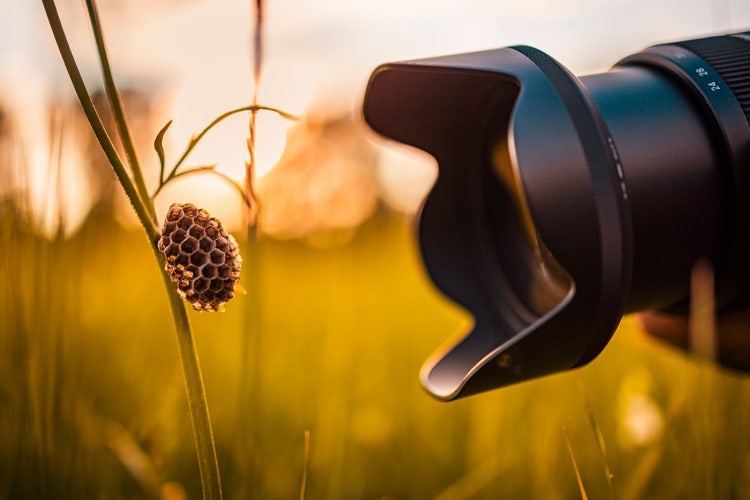
Macro photography is a genre that is dependent on tools. The right tools will get you close to your subject for that perfect shot. But what are those right tools? The primary tool apart from the camera and the tripod is a macro lens. Macro lenses are designed to have a close focusing distance and can capture life-sized photos of small subjects. If photographing a minor bug, you can capture a similar life-size representation on the sensor from the closest focusing distance. Many lenses are labeled as a macro but don't offer true macro properties. True macro lenses will have the letters 1:1 mentioned on the lens barrel.
Alternatives to buying a macro lens
If you're beginning in macro photography and don't have the budget for a proper macro lens, you can try an alternative. The alternative involves using a tool known as a lens reversal adapter. This adapter screws on your camera's lens mount and assists in mounting your standard lens in reverse.
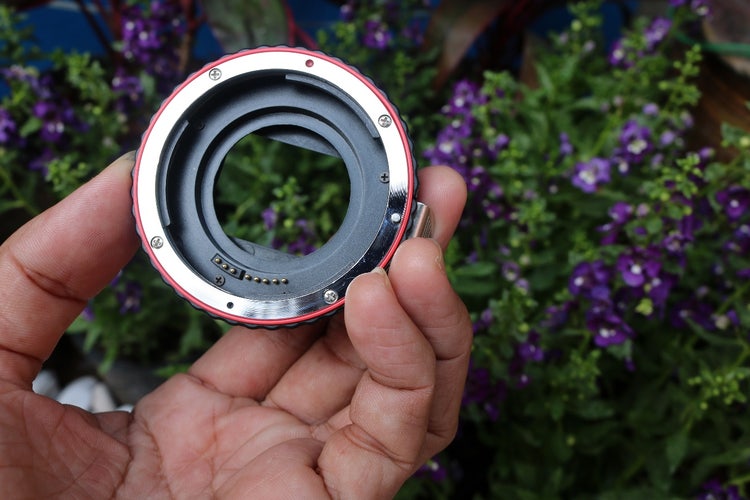
You must first screw the adapter to the lens mount where you would typically mount your lens. Once the lens adapter is firmly in place, reverse the lens and mount it using the front thread. The back of the lens is facing forward, and the front is facing inward. You've successfully got yourself a working macro lens!
The third option would be to use closeup filters. These filters screw onto the front of your lens. You don't have to buy adapters or figure out ways to reverse-mount your lens with these filters. All you've got to do is screw on the filter to the front of your lens using the filter thread.
The major downside of using macro filters is that they're optically not as sharp as the dedicated macro lenses. Also, some macro filters are known to create color fringing and distortion.
There is a fourth option still, and that's extension tubes. Extension tubes, as the name suggests, are hollow tubes. These tubes sit between the lens and the camera, creating a gap between them. This gap results in the lens's ability to focus closer than in its normal position. In other words, infuses macro properties into a normal lens.
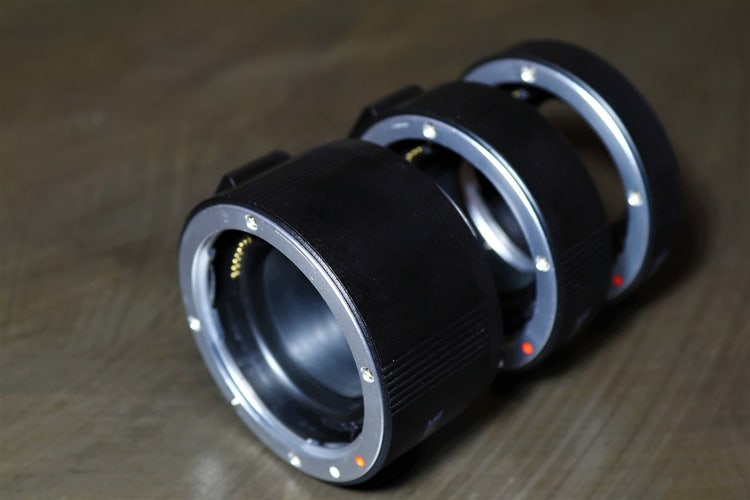
Just like macro filters, extension tubes also have a downside, and that's they change the effective aperture of the lens. Extension tubes increase the focal length of the lens. As the focal length is a parameter that governs the aperture, the effective aperture of the lens changes. You need a longer shutter speed or higher ISO to compensate for that.
Weighing all the parameters using the lens reversal technique is the best alternative to using a dedicated macro lens if you're on a budget.
Tips on choosing the right macro lens
There are two things to remember when choosing a macro lens for your camera. They're -
- the lens's focal length
- the maximum magnification
Focal length is important because the longer the focal length of the lens more is the working distance between the camera and the subject you're trying to photograph.
Advantages of a long focal length lens
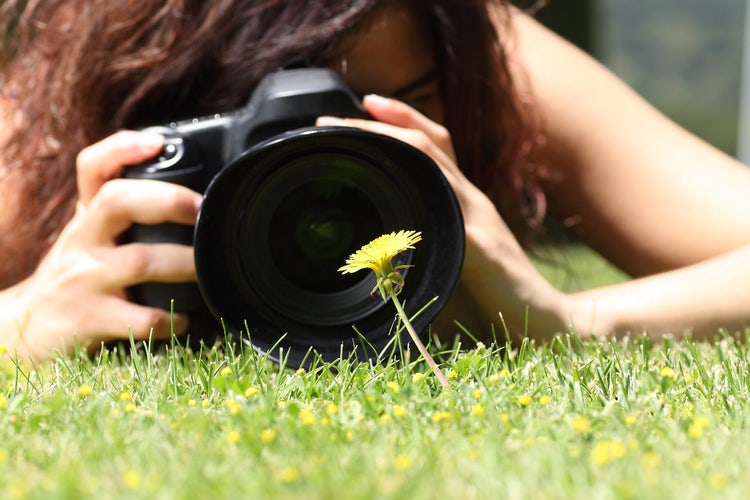
This offers several significant advantages. First, when you've more room between your subject and the camera, there are fewer chances that you're going to obstruct the light.
The second significant advantage is that you cannot accidentally scare your teensy-weensy photography subjects. Getting too close to a minor bug with a large camera and lens in your hand isn't the brightest of ideas. You can easily scare the living daylights out of them and ruin your chances of taking a nice photo. A long focal length, in other words, a telephoto lens, is a better option.
What focal length to choose?
Macro lenses are available in different focal lengths. You can find one with a focal length of 40mm just as easily as a macro lens with a focal length of 150mm. As explained above, longer focal lengths are better suited for macro photography.
Magnification Ratio
The magnification ratio is the next important aspect that decides an excellent macro lens. The magnification ratio denotes how large or small the image of the subject you're photographing appears on the sensor compared to the actual size of the subject. If you see a lens marked with the letters 1:1, it means that this lens will be able to project a life-sized image of the subject onto the image sensor. Such lenses are considered true macro lenses. When choosing a macro lens, always insist on choosing a lens that offers at least 1:1 magnification.
Ideas for macro photography subjects
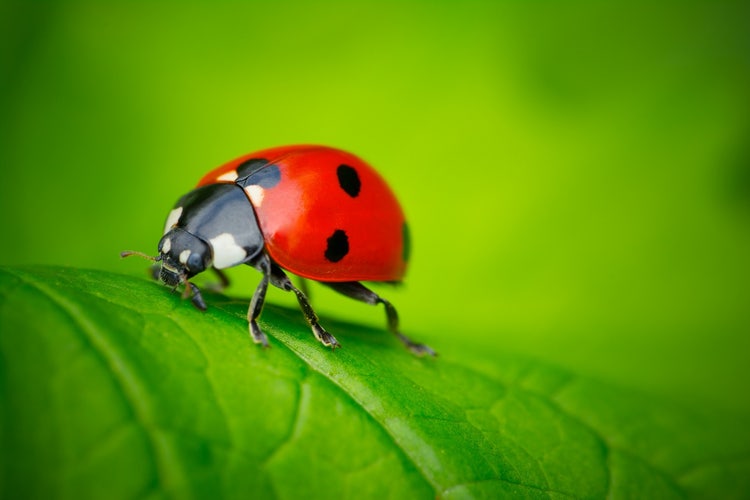
Macro photography is one of those sweet genres of photography that never runs out of a topic or subject to photograph. Even if you are stuck at home in bad weather, you can focus your lens on many subjects and capture exciting photos. Be it currency coins, tiny dolls, food grains, sharpened pencils, you name it, and it's probably an excellent topic for macro photography.
If it's not raining and you can head outdoors, there are more opportunities to shoot macro photos outdoors. You can photograph flowers, bugs, blades of grass, leaves, rocks, and grains of sand; pretty much anything and everything you can see is a subject for macro photography. A macro photo changes the perspective of how we look at tiny things. Macro photography highlights elements that are small in a way that we don't usually see during our everyday life, making them so intriguing and absorbing in the first place.
Closing Thoughts
Hopefully, by now, you have a good understanding of macro lenses and their importance in making macro photos. You've also got an idea of the alternatives that can give you a comparable result without buying a macro lens. As noted before, the tools are as necessary as your skills in macro photography. Once you have the right tools, you can experiment with different subjects. Other parameters are also essential, like keeping your camera stable and, of course, lighting. Learn more about macro photography here.